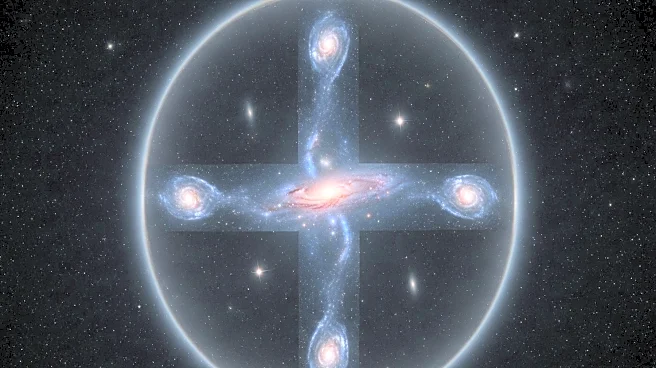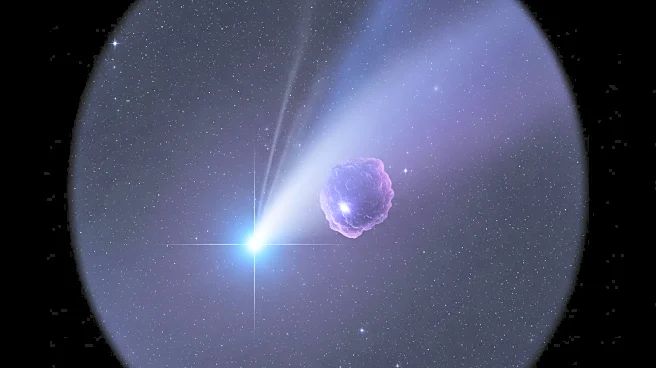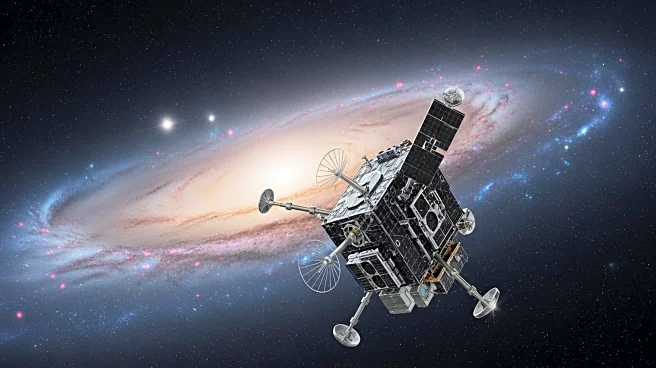What is the story about?
What's Happening?
Astronomers have discovered a rare cosmic configuration known as an Einstein Cross, featuring an unexpected fifth image. This anomaly, observed by an international team including Rutgers University researchers, indicates the presence of a massive, hidden halo of dark matter. The discovery was made using data from the Northern Extended Millimeter Array (NOEMA) and the Atacama Large Millimeter/submillimeter Array (ALMA). The fifth image in the Einstein Cross could not be explained by the visible galaxies alone, suggesting the influence of an invisible dark matter halo. This finding allows scientists to study both the distant galaxy and the dark matter affecting its light, offering new insights into the universe's structure.
Why It's Important?
The discovery of the fifth image in the Einstein Cross is significant as it provides a unique opportunity to study dark matter, which constitutes most of the universe's mass but remains invisible. Understanding dark matter is crucial for comprehending the universe's formation and evolution. This finding also enhances the scientific community's ability to model gravitational lensing, a phenomenon that can magnify distant galaxies and reveal otherwise hidden cosmic structures. The research underscores the importance of international collaboration and advanced astronomical tools in uncovering the universe's mysteries.
What's Next?
Future observations and modeling efforts will focus on confirming the presence of additional features, such as outflowing gas from the galaxy, which could validate the current models. If these predictions are not confirmed, it may lead to new scientific inquiries and adjustments in the understanding of dark matter and gravitational lensing. The continued support of international collaborations and funding from organizations like NASA and the National Science Foundation will be vital in advancing this research.
Beyond the Headlines
This discovery highlights the potential of using gravitational lensing as a natural laboratory to study both visible and invisible cosmic phenomena. It also emphasizes the role of advanced technology and international cooperation in pushing the boundaries of astrophysics. The findings could lead to a deeper understanding of the universe's fundamental components, including the elusive dark matter.
AI Generated Content
Do you find this article useful?













